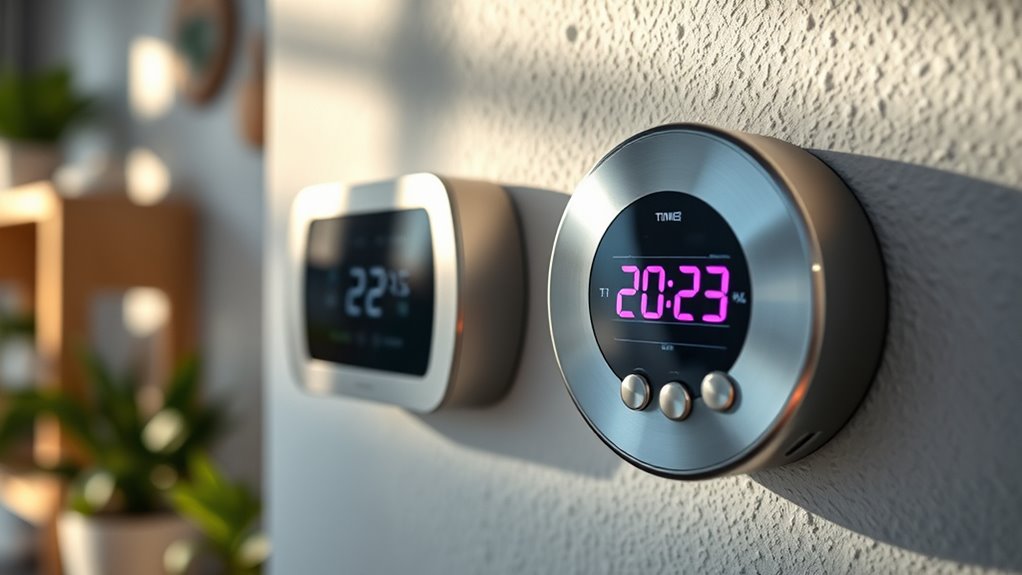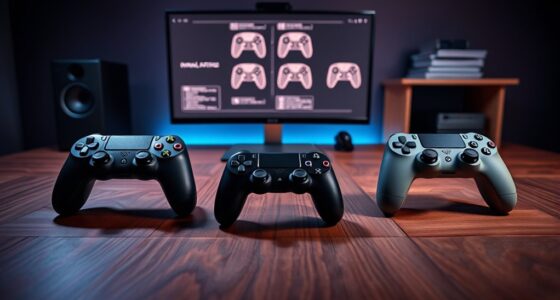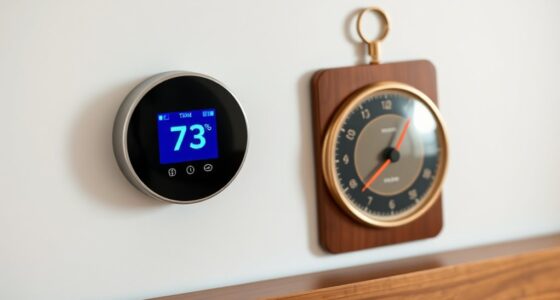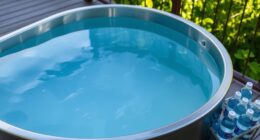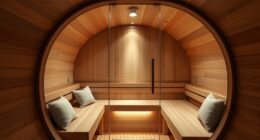Understanding common myths about timers and thermostats can help you save energy and stay comfortable. Proper placement, programming, and maintenance are essential for these devices to work effectively. Manual controls can sometimes be better than automation, and combining smart tech with good habits boosts efficiency. Temperature and humidity affect comfort more than you might think. Keep exploring these facts, and you’ll discover how to optimize your system’s performance even further.
Key Takeaways
- Modern timers and thermostats are user-friendly and reliable when properly programmed and placed for optimal accuracy.
- Correct placement and calibration of thermostats improve efficiency, comfort, and prevent false readings.
- Timers automate routines like lighting and heating, reducing energy waste and enhancing convenience when scheduled properly.
- Proper use and maintenance of thermostats are essential for energy savings, extending appliance lifespan, and consistent comfort.
- Managing indoor humidity alongside temperature is crucial for comfort, health, and preventing indoor issues like mold.
Common Misconceptions About Home Timers and Thermostats
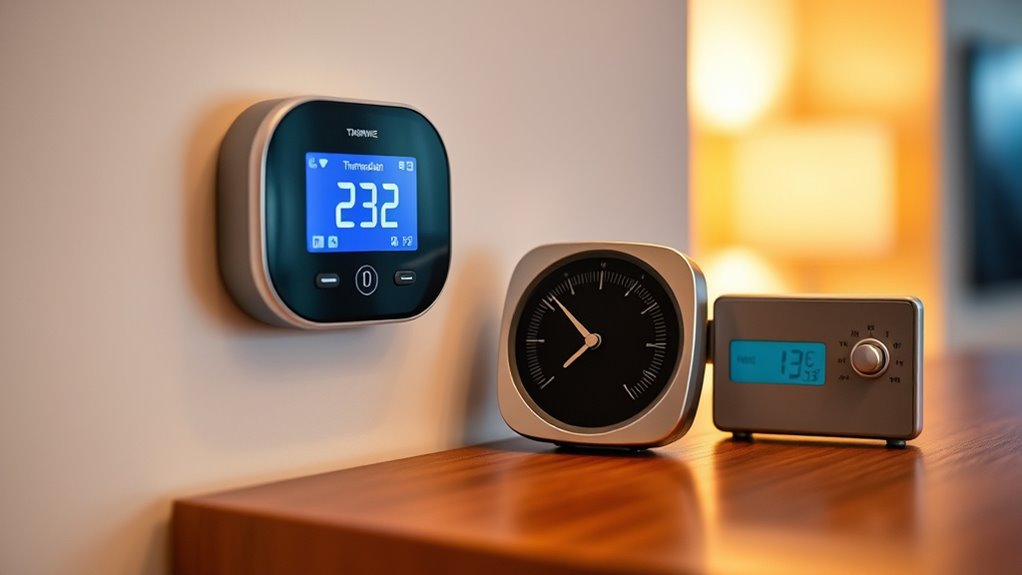
Many homeowners believe that all timers and thermostats are difficult to set up or unreliable, but this isn’t true. One common misconception is that timing strategies are complicated, but modern devices are user-friendly and adaptable. Proper thermostat placement is often overlooked, yet it plays an essential role in performance. Placing your thermostat away from heat sources, drafts, or direct sunlight ensures accurate readings and efficient heating or cooling. Misunderstanding these basics can lead to inconsistent comfort and higher energy bills. You might think that timers require constant adjustments, but once programmed correctly, they operate automatically, saving you time and effort. Additionally, understanding home improvement principles can help you optimize your system and create a more comfortable living environment. By focusing on simple timing strategies and correct thermostat placement, you can promote efficiency and convenience without hassle or confusion.
How Timers Can Optimize Your Daily Schedule
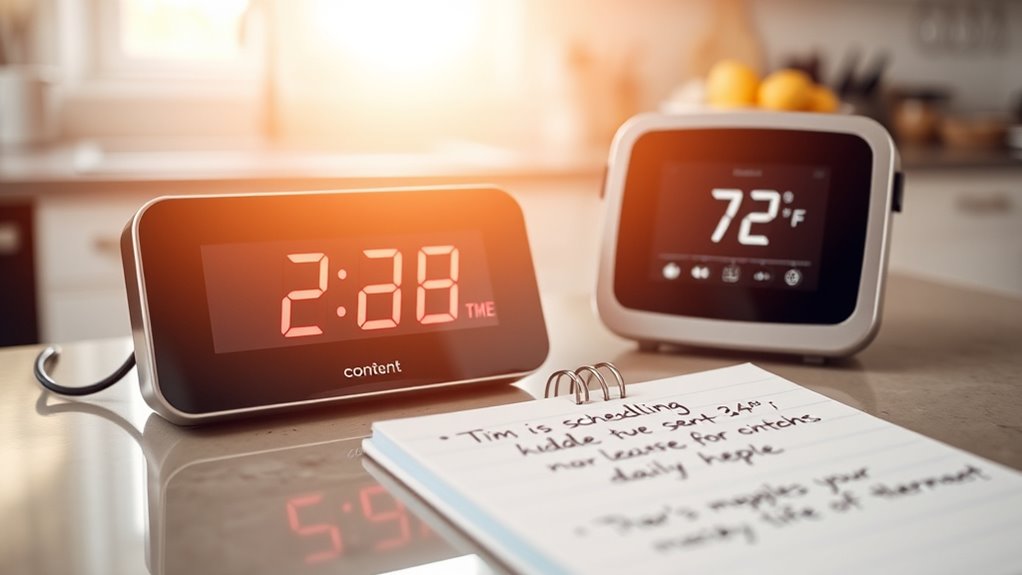
Timers help you automate routine tasks so your home runs smoothly without constant oversight. By setting schedules, you can make sure lights, appliances, and heating turn on and off at the right times. This not only keeps your day organized but also helps you save energy efficiently. Properly adjusting your tire pressure on gravel roads ensures optimal riding performance and comfort.
Automate Routine Tasks
Automating routine tasks with timers can considerably streamline your daily schedule, freeing up time for more important activities. For instance, using timers for garden irrigation ensures your plants get consistent watering without manual effort, saving you time and preventing over- or under-watering. Lighting automation is another effective way to simplify your evening routines; set your lights to turn on at sunset and off at bedtime, enhancing convenience and security. These timers work silently in the background, maintaining schedules without your constant input. By automating these everyday chores, you reduce decision fatigue and create a more organized environment. Whether it’s watering the garden or managing lighting, timers help you stay on top of routine tasks effortlessly, giving you more control and free time in your busy day. Additionally, incorporating Kia Tuning modifications can further optimize your vehicle’s performance and efficiency.
Save Energy Efficiently
Using timers strategically can substantially reduce your energy bills by ensuring devices operate only when needed. This promotes effective energy conservation by preventing unnecessary power usage. By scheduling your heating, cooling, and lighting systems, you achieve better system optimization, aligning energy consumption with your daily routines. Timers help you avoid waste during unoccupied hours, lowering overall energy costs. They also extend the lifespan of appliances by reducing wear and tear caused by constant operation. When you program timers thoughtfully, you can maintain comfort while minimizing energy waste. Incorporating wall organization systems can create visual interest and functionality, making it easier to manage devices and cords involved in your energy-saving routines. This simple yet powerful tool makes it easy to implement energy-efficient habits, ensuring your home runs smoothly without excess energy expenditure. Ultimately, timers are a practical way to save money and support sustainable living.
The Truth About Programmable vs. Non-Programmable Thermostats
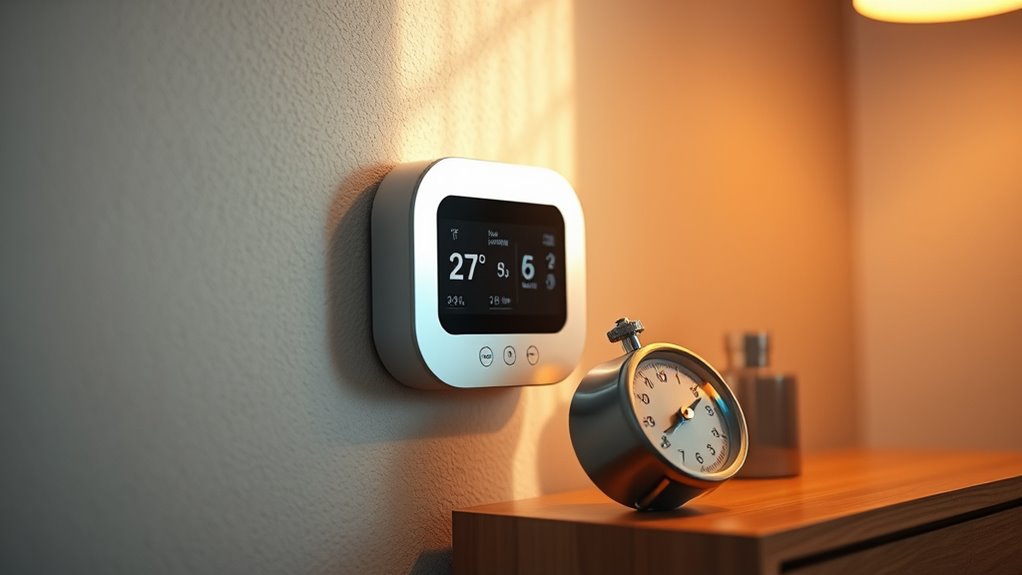
While programmable thermostats often get praised for saving energy, it’s important to understand how they compare to non-programmable models. The key lies in your programming protocols and thermostat placement. A programmable thermostat allows you to set schedules, but only if you program it correctly. Proper placement ensures it accurately senses your home’s temperature, maximizing efficiency. Additionally, selecting a thermostat with smart features can further optimize energy use and convenience.
Myths About Energy Savings and Cost Reduction
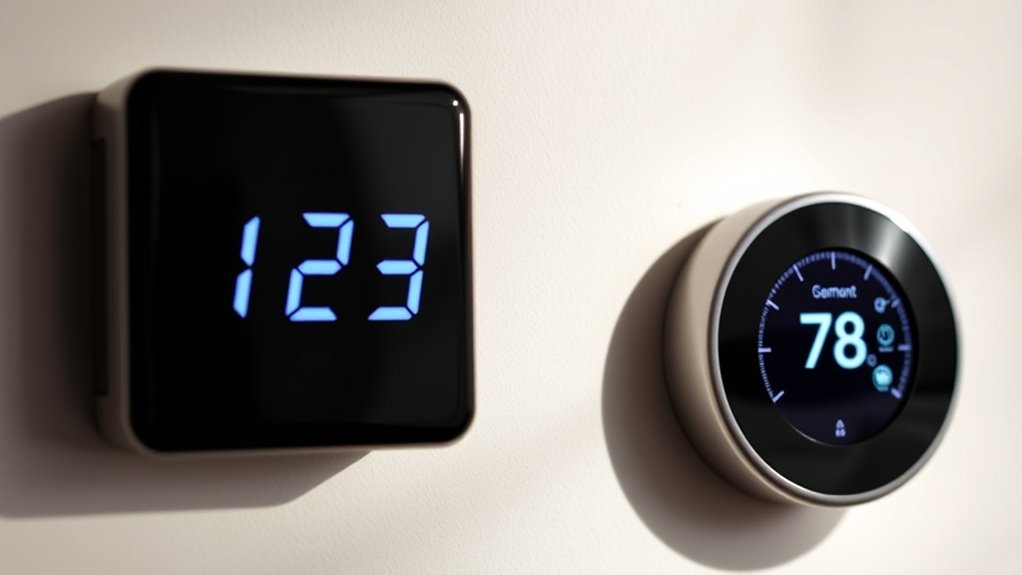
Many homeowners believe that installing a programmable thermostat will automatically slash their energy bills, but this isn’t always true. While these devices can help, true savings depend on proper use and other factors. Conducting an energy audit reveals where your home wastes energy, such as poor insulation or leaks, which a thermostat alone can’t fix. Improving insulation techniques ensures your home retains heat in winter and stays cool in summer, reducing the workload on your HVAC system. Relying solely on a thermostat to cut costs ignores these critical upgrades. To truly reduce expenses, combine smart thermostat programming with energy-efficient insulation and regular audits. This extensive approach guarantees more consistent savings and a more comfortable home. Understanding cybersecurity measures and protecting your smart devices is also essential to prevent hacking attempts that could compromise your home security.
The Science Behind Temperature Setpoints and Comfort
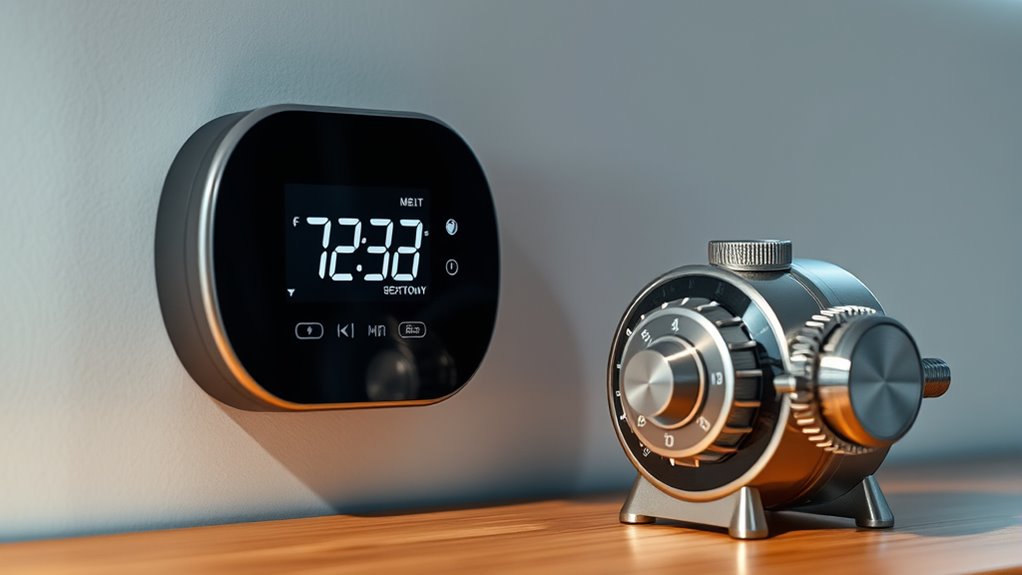
Understanding your thermostat’s temperature range helps you set realistic comfort levels, but it’s also important to take into account your body’s normal temperature, which is around 98.6°F. Humidity levels can make a room feel warmer or cooler than the actual temperature, affecting your comfort. By knowing these factors, you can optimize your thermostat settings for better comfort and efficiency. Additionally, tuning modifications can influence how your vehicle responds to temperature changes, much like adjusting your home’s settings for optimal comfort.
Thermostat’s Temperature Range
Your thermostat’s temperature range defines the limits within which your heating and cooling systems operate to keep your environment comfortable. This range is influenced by factors like temperature calibration, which guarantees your thermostat readings match actual temperatures, and thermostat placement, which affects accuracy. If your thermostat is placed in direct sunlight or near drafts, it may give false readings, narrowing effective temperature control. It is also important to consider air quality as poor indoor air can affect sensor performance. Most thermostats have a default range, often between 50°F and 90°F, but you can usually adjust these limits for better comfort and efficiency. Understanding these boundaries helps prevent your system from cycling unnecessarily or failing to respond when needed. Proper calibration and strategic placement ensure your thermostat maintains consistent, accurate temperature control within its designed range.
Human Body Temperature Norms
The human body maintains a core temperature that typically hovers around 98.6°F, but this setpoint can vary slightly from person to person and throughout the day. Knowing this is key in medical diagnostics and optimizing athletic performance. Your body’s temperature influences how you feel and perform, especially during physical activity. Factors like time of day, hydration, and activity level can cause minor fluctuations. Understanding these norms helps you interpret temperature readings accurately. For example, a slightly elevated temperature might signal an infection, while a lower one could indicate fatigue. Staying aware of your body’s temperature norms ensures better health management and peak performance. Remember, your body’s temperature isn’t static; it adapts to your environment and activities, which is crucial for both health monitoring and athletic success. Additionally, body temperature regulation plays a vital role in maintaining homeostasis and overall well-being.
Impact of Humidity Levels
Humidity levels directly influence how we perceive temperature and comfort, even when the thermostat is set to a specific point. When humidity control is off, high moisture levels can make a room feel warmer or stickier, while low moisture can cause dryness and discomfort. Proper humidity management helps maintain a balance, making your space feel more comfortable at a lower temperature. Conversely, excessive moisture can lead to mold and damage, so monitoring moisture levels is essential. Humidity control plays a crucial role in creating an optimal indoor environment. By adjusting humidity levels, you can optimize your indoor environment, reduce energy use, and improve overall comfort. Understanding this link between humidity and temperature perception allows you to create a more pleasant, healthier living space, regardless of the outdoor weather conditions.
Why Manual Control Sometimes Outperforms Automation
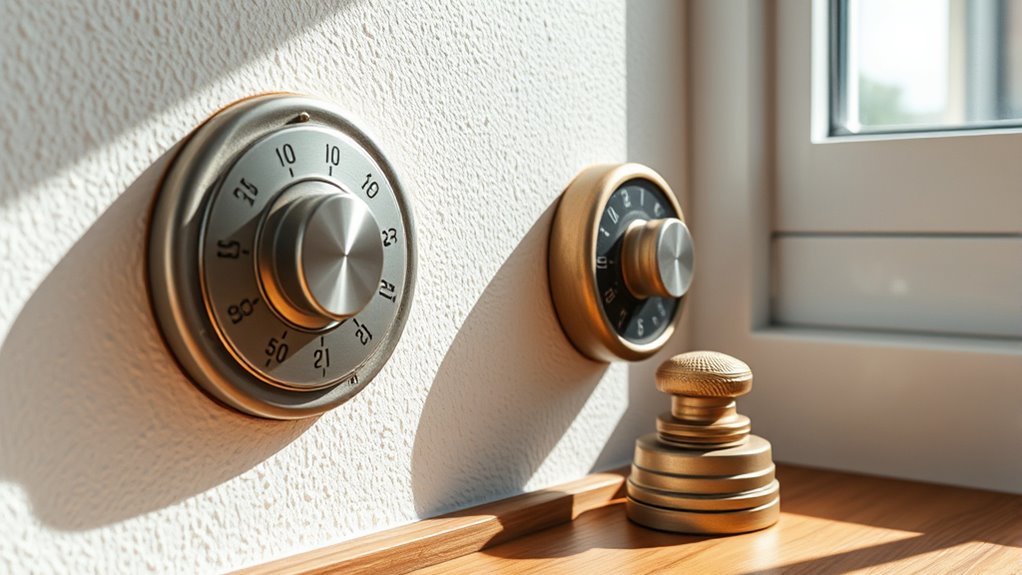
While automation systems aim to optimize comfort and efficiency, there are situations where manual control can actually outperform them. When you use manual overrides, you can quickly adapt to sudden changes or unique preferences that automated settings might not account for. Your personal user preferences—like adjusting the thermostat for a specific room or time—are often better handled manually, especially when routines vary.
Consider these scenarios:
- Unexpected weather shifts that automation hasn’t accounted for
- Personal comfort needs that differ from preset schedules
- Short-term adjustments for guests or special events
In these cases, manual control gives you direct, immediate power, ensuring your environment matches your current needs better than automated systems.
The Impact of Proper Calibration and Maintenance
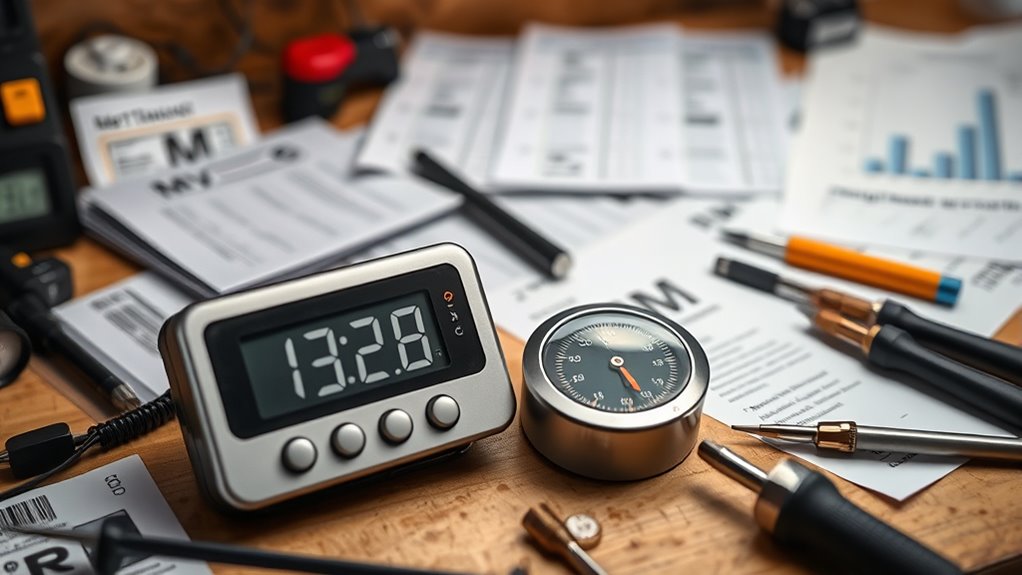
Proper calibration and regular maintenance are essential to guarantee your thermostat and timer work accurately and efficiently. When your devices are properly calibrated, they better respond to environmental changes, ensuring ideal humidity control and consistent temperature regulation. Regular maintenance helps prevent dust buildup and mechanical issues that can throw off thermostat placement and accuracy. Correct thermostat placement is critical; placing it in the wrong spot can lead to false readings and inefficient operation. Well-maintained equipment maintains its calibration longer, saving you energy and reducing wear and tear. By prioritizing calibration and maintenance, you ensure your system performs at its best, maintaining comfortable conditions and maximizing energy savings. Ultimately, this proactive approach keeps your climate control reliable and effective year-round.
Integrating Smart Technologies for Better Efficiency
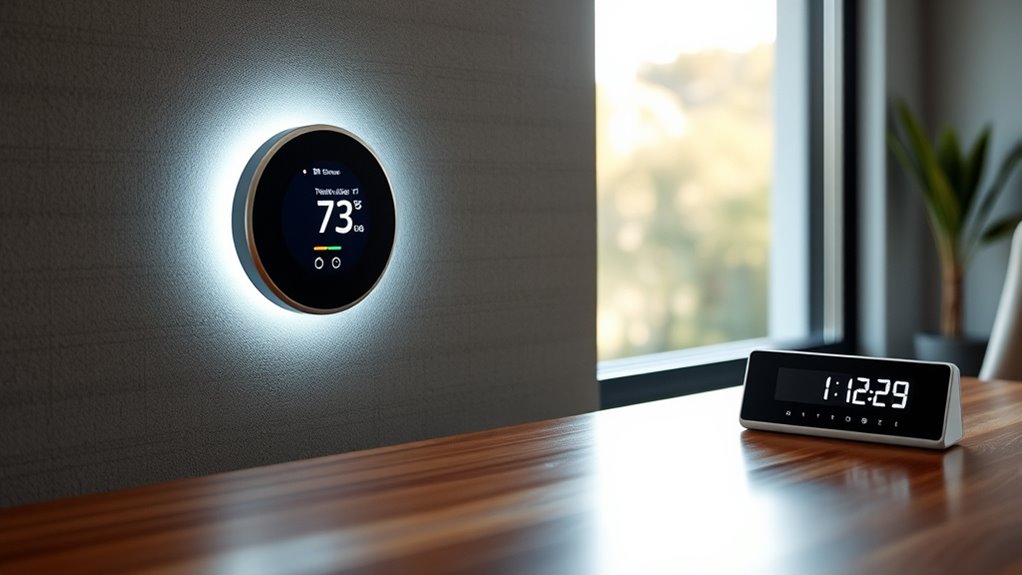
Integrating smart technologies into your thermostat and timer systems can markedly boost energy efficiency and enhance comfort. By embracing home automation, you gain precise control over your heating and cooling, reducing waste and lowering bills. Smart systems learn your routines, adjusting settings automatically for ideal energy management. You can:
Smart tech integration boosts energy efficiency and comfort through automated, responsive thermostat control.
- Use programmable thermostats that adapt to your schedule
- Connect devices for seamless automation and remote control
- Incorporate energy monitoring tools to track and optimize consumption
This integration helps you avoid unnecessary energy use and ensures your home stays comfortable. It’s a straightforward way to upgrade your existing setup, making your system smarter and more responsive. With smart technology, you maximize efficiency, save money, and enjoy greater convenience in managing your home’s climate.
Practical Tips for Maximizing Your System’s Performance
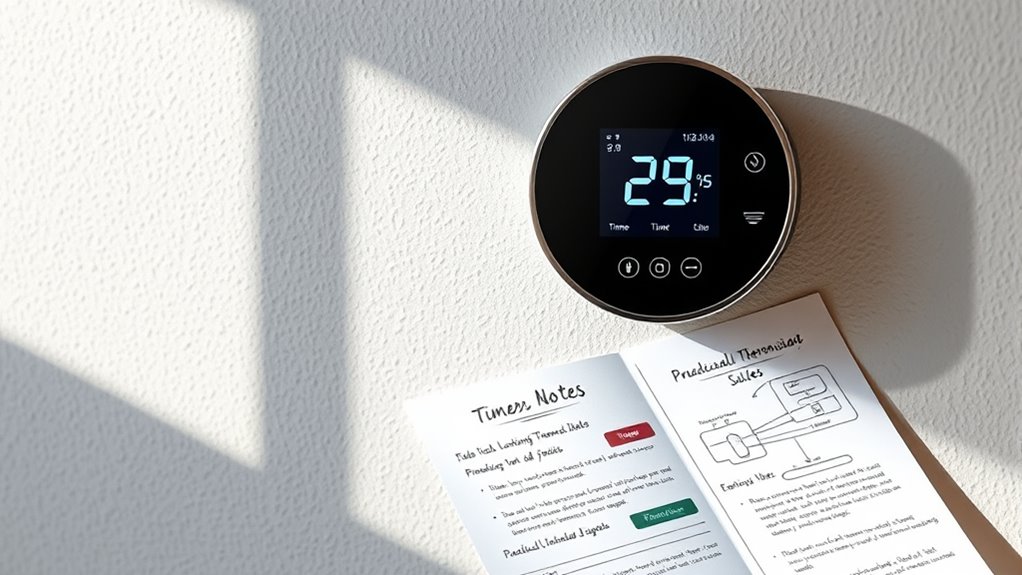
To get the most out of your thermostat and timer systems, start by fine-tuning their settings based on your daily routines. Use smart sensors to monitor room occupancy and temperature fluctuations, guaranteeing your system adjusts efficiently. Regular energy audits can identify areas where your system might be wasting energy, allowing you to make targeted improvements. Keep your thermostat calibrated and set to ideal temperatures—lower in winter and higher in summer when you’re away or asleep. Take advantage of programmable features to align heating and cooling schedules with your actual needs. Additionally, guarantee your timers are functioning correctly and are synchronized with your routines. These small adjustments help maximize comfort while reducing energy costs and extending your system’s lifespan.
Frequently Asked Questions
How Do I Choose the Right Timer or Thermostat for My Home?
To choose the right timer or thermostat, consider your home’s size and your daily schedule. Opt for smart technology that learns your routines, helping you save energy and money. Look for features like remote control, compatibility with your HVAC system, and energy-saving modes. A user-friendly interface makes adjustments easier, ensuring you maximize energy savings while maintaining comfort. Ultimately, selecting a device tailored to your lifestyle helps optimize efficiency and convenience.
Are There Safety Concerns With Programmable Thermostats?
Think of a programmable thermostat as a vigilant guardian for your home’s comfort. Generally, there are no major safety concerns if you follow proper installation tips. Just make certain it’s installed correctly, avoid wiring errors, and keep it away from water or moisture. These precautions help prevent electrical issues, so your thermostat works safely and effectively, giving you peace of mind while managing your home’s temperature.
Can Timers and Thermostats Be Integrated With Solar Energy Systems?
Yes, you can integrate timers and thermostats with solar energy systems. This allows you to optimize energy use, especially with solar panel integration and energy storage compatibility. By syncing your thermostat with your solar setup, you can schedule heating and cooling to match solar energy availability, reducing reliance on grid power and saving costs. Confirm your devices are compatible with your solar system to maximize efficiency and performance.
What Are the Best Practices for Troubleshooting Timer or Thermostat Issues?
Ever wonder why your timer or thermostat isn’t working properly? First, check sensor calibration to make certain accurate temperature readings. Next, perform wiring inspections to identify loose or damaged connections. Reset the device if needed and replace batteries if applicable. Is the system still malfunctioning? If so, consult the user manual or call a professional for a thorough diagnosis. These steps can often resolve common timer and thermostat issues quickly.
How Do Weather Changes Affect Thermostat Settings and Performance?
Weather changes can impact your thermostat settings and performance by affecting humidity control and energy efficiency. When temperatures drop or rise unexpectedly, your system may overwork or underperform, making it harder to maintain a consistent indoor climate. Adjust your thermostat accordingly, and consider humidity control features to optimize comfort and save energy. Regularly updating settings helps guarantee your system remains efficient, regardless of weather fluctuations.
Conclusion
By busting myths and understanding the real science behind timers and thermostats, you hold the key to a smoother, more efficient home. Think of your system as a well-tuned orchestra—every note, every setting working in harmony. When you calibrate, maintain, and smartly integrate technology, you turn everyday comfort into a symphony of savings and control. Take charge, fine-tune your environment, and let your home breathe easy with confidence at your fingertips.
